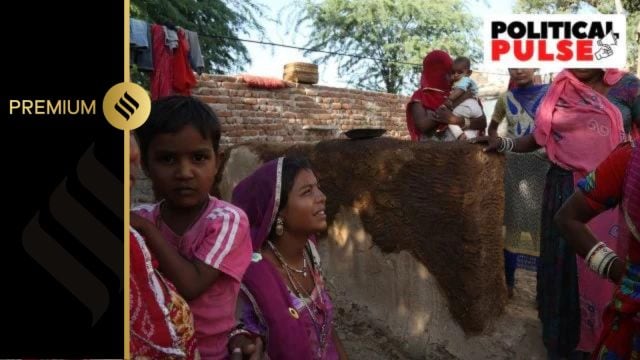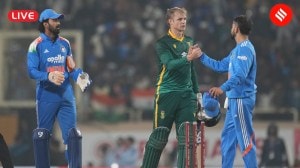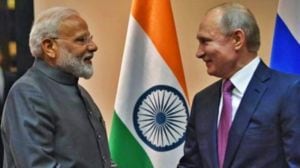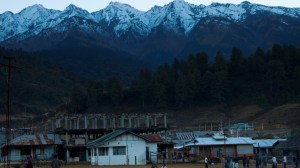As the BJP banks on its Narendra Modi card and the Opposition INDIA bloc frames its campaign around “saving democracy and the Constitution”, voters in South Bihar where polling will be held on April 19 largely deploy caste to spell out their choices.

The first to realise the potential of breaking traditional caste hegemonies, the BJP began its outreach to individual groups a decade ago. So if the Kushwahas have a representation both in BJP state president and Deputy Chief Minister Samrat Choudhary, as well as BJP ally Upendra Kushwaha, Kurmis have been brought into the umbrella through the JD(U)’s Nitish Kumar. Dusadhs are seen to be looking at the BJP after it made space for LJP (Ramvilas) leader Chirag Paswan, while Musahars have a representation in NDA ally and former Bihar CM Jitan Ram Manjhi.
However, some BJP leaders are privately concerned that these localised caste-based permutations and combinations have made the Lok Sabha elections in Bihar a local affair rather than a single-theme national election that the party would have preferred, with focus on the PM – and, that a repeat of the 2019 NDA tally of 39 seats out of 40 could be difficult.
Another reason for the breach in the caste front the BJP was banking on is the change in the hide-bound RJD, which has for long been identified with only two groups, Muslims and Yadavs. Under Tejashwi Yadav, it has started reaching out too, with the former deputy CM even coining a catchy acronym for it: “MY-BAAP”.
“People say the RJD is an MY party. But let me tell you we have BAAP along with MY. BAAP stands for ‘Bahujan, Agda (forward castes), Aadhi Aabadi (women), and Poor. We are an A-Z party,” he now says.
The entry of Mukesh Sahani’s Vikassheel Insaan Party, and its base among the Mallahs, into the INDIA is a bonus, as is the OBC and Dalit support which the RJD’s ally CPI (ML) Liberation still commands in pockets.
Story continues below this ad
Amidst these caste calculations, the only national leader to be talked about is Modi. Even his mention comes only after conversations revolving around caste, and that too more among the upper castes. However, even the OBCs and Dalits who say they will vote for the BJP cite him as the reason.
The RJD’s candidate list also reflects its new approach, with many names from caste groups that the BJP is eyeing. For example, the party has fielded four Kushwahas in the 23 seats it is contesting – the BJP has none on its symbol in the 17 it is fighting.
In the first phase, the RJD’s Kushwaha candidates are Abhay Kumar Kushwaha in Aurangabad, and Shravan Kushwaha in Nawada. From Gaya, a reserved seat, the RJD has fielded a Paswan, Kumar Sarvajeet Paswan, hoping to draw some of the Paswan vote, and add it to its MY combine.
Manjhi has lost the last three Lok Sabha elections from Gaya – last two times to the BJP, in 2014 as a JD(U) candidate and in 2019 as an ally of the RJD and Congress. This time, he hopes to add the BJP’s traditional upper caste votes to his own Musahar votes and a chunk of Paswan votes.
Story continues below this ad
The Paswans and Musahars are believed to be the two largest groups of Dalits in Gaya, around 30% of whose population is SC.
However, on the ground, it is not that simple. In the Paswan-heavy Vakilganj village, just a kilometre from the junction of the Grand Trunk Road and Dobhi in Gaya, loyalties lie with Chirag Paswan, the son of their biggest leader, Ram Vilas Paswan.
Among the village’s 48 households, almost all Paswan, there is a consensus on voting for the NDA because of Chirag, while the four Yadav households swear by the RJD.
“Chirag Paswan is the No. 1 leader of the country. If he is with the NDA, so are we,” says Ram Kumar Paswan, sitting in front of his small pucca house.
Story continues below this ad
However, Murari Dangi, a Kushwaha from a village close to Dobhi, smiles through paan-stained teeth when asked about his political preference: “I am with Modi. He has done a lot. We get money under the PM Kisan Samman Nidhi scheme. Why should I vote for anyone else?”
In Aurangabad, the fourth Bihar seat voting on April 19, the RJD seems to be having more of a success in its Kushwaha arithmetic. In what was seen as an easy seat for the BJP, which has re-fielded its three-time MP Sushil Kumar Singh, a Rajput, the RJD has gone with Abhay Kumar Kushwaha.
Kushwahas also have a significant presence here apart from Yadavs, though Rajputs are the single largest group and the dominant caste.
The Aurangabad seat has also seen a series of prominent Rajput MPs, including former Bihar CM Satyendra Narayan Sinha, his son Nikhil Kumar and Sushil Kumar Singh’s father Ramnaresh Singh.
Story continues below this ad
In the Kushwaha-dominated Gaura village in Aurangabad, and in Dhanu Bigha that has both Yadavs and Kushwahas in large numbers, the RJD appears to have succeeded in projecting the fight as a chance to end “Rajputs’ sense of entitlement over the district”. They claim that the sitting MP ignores Kushwaha villages.
Also, unlike the striking popularity of Chirag, a young, articulate leader, among the Dusadh Paswans, the BJP’s Samrat Chaudhary and its ally Upendra Kushwaha seem to be failing to ensure a mass transfer of the Kushwaha votes to the NDA.
A Kushwaha resident of Gaura village, Ramesh Mehta, says: “Samrat Chaudhary is the state BJP president and the party has not fielded any Kushwaha candidate on its symbol. Could Samrat not ensure even that?” Standing next to him, a local resident says: “It will take time for him to become a bada neta (big leader) in the BJP.”
A BJP leader too admitted on condition of anonymity: “The Kushwahas are not voting as a solid vote bank for the party. They are voting for Kushwaha candidates.”
Story continues below this ad
However, while the leader admits a close contest in Aurangabad, he believes the BJP will scrape through as the seat has always been won by a Rajput. “Wahaan ke Rajputon ki aabaadi shaher se gaaon tak hai, aur unka vote bahut maarak hai (The Rajputs are spread out from city to villages there, and their votes are the clincher).”
In Nawada, a Bhumihar-dominated constituency, the BJP has fielded former Union minister C P Thakur’s son Vivek.
Here too, the key may be the upper caste vote in general and the Bhumihar vote in particular, which is solidly behind the BJP. “We were with Modi and will remain with Modi. Unhone duniya ka sab kuchh hum logon ko laa kar dikha diya hai 10 saal mein (He has brought us everything that the world has to offer in the past 10 years),” says Ajay Mishra of Phulma village.
Could he be more specific? Mishra, who works as a driver, jumps to the PM’s defence. “Even Modi ji can only do what is possible here. Ek ghar mein teen bhai ko ghar chalaane mein mushkil hoti hai, Modi ji ko to desh chalana hai (Even brothers face issues running a household together, here Modi has to run the entire country).”
Story continues below this ad
What hasn’t changed, in Mishra’s view of things, is the caste dynamic – the upper castes with the BJP; and the Yadavs and Muslims with the RJD.
What about Kushwahas? Mishra smiles: “Unka humko nahin pataa (I don’t know about them).”

































